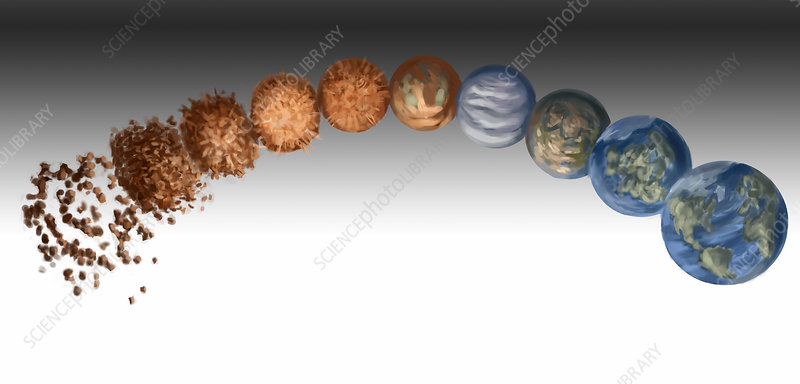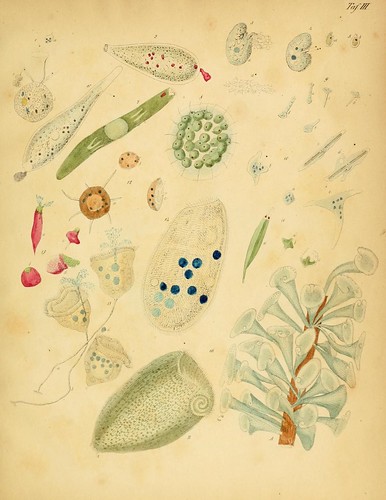As far as we are aware, Earth is the only planet in the universe that supports life. So where did it all begin?
Life is what makes our world unique. As far as we are aware, life only exists on Earth. Despite the fact that we live in a time of unprecedented environmental degradation, life can be found in every ocean and even in the harshest of settings on land.
Still, why? When did life first appear on Earth, and how did that happen? What chain of causes and effects brought about the existence of birds, insects, amboebas, and human beings like yourself and me?
This is the focus of Unexplainable’s three-part series Origins. Unexplainable is a Vox podcast that delves into the great unknown in search of answers to pressing problems.
Finding out how life got started on Earth is about more than just filling in the blanks in our collective history book, though that’s certainly an important part of it. The attempt to discover how life began on Earth raises many other fundamental mysteries. To what extent unusual is the emergence of life on a planet? How unlikely is it that life might emerge on any given planet?
While we lack some information, what we do have allows us to piece together an epic origin story that transports us back to the dawn of our universe.

1) Where did Earth’s water come from?

Water is the one element that all life on Earth need, therefore understanding why there is life here must begin with water. Although diverse living forms may endure on a wide variety of dietary sources, nothing can exist without water.
Therefore it’s odd that scientists still don’t entirely comprehend how water ended up covering two-thirds of the surface of our planet and establishing the initial prerequisite for life.
The issue is easy to solve. It was very warm while the Earth was formed. Whatever water present at the start would have evaporated.
How, therefore, can you get such a large amount of liquid to condense on the surface of a planet that ought to be extremely hot? According to Lydia Hallis, a planetary scientist at the University of Glasgow, Noam Hassenfeld of Unexplainable.
Scientists can come up with a few logical possibilities. Was it brought to us by comets striking our planet? Or, even more crazily, is all the water we have a result of planets like Jupiter straying into the inner solar system and drifting toward the sun? Or was it somehow buried deep inside the prehistoric Earth?
In an effort to learn more and track down some samples of the planet’s oldest water, Hallis has been traversing the globe. Here is what she has discovered thus far:
2) How did life start in that water?

Somehow, life appeared when there was water.
It’s conceivable that life didn’t even begin on Earth.
But, scientists have solid grounds for believing it happened.
Scientists have been working to mimic the circumstances of that early, water-filled Earth in laboratories for many years.
It is believed that if they can recreate the circumstances of the early Earth, they may someday be able to produce organisms that resemble the first primitive cells that developed on this planet billions of years ago.
They may then piece together a narrative about the origin of life on Earth.
This field of study has achieved some astounding accomplishments.
Scientists Harold Urey and Stanley Miller demonstrated in the 1950s that it is feasible to create the amino acid glycine, one of life’s most fundamental building blocks, by combining some gasses with heat, simulated lightning, and others thought to have filled the atmosphere billions of years ago.
Since that time, scientists have developed lipid blobs that resembled cell membranes.
RNA molecules, which resemble DNA but are more simpler, have also been created.
But, it hasn’t been possible to get all these elements of life to unite into a single basic cell in a lab.
What then is impeding progress?
What would it mean if researchers were to truly succeed in their quest to capture life in a bottle?
In addition to learning the origin of life on Earth, they may also draw the startling conclusion that life must be quite prevalent across the cosmos.
3) What is life anyway?

In any case, modern science has shown that the planet is absolutely teeming with life. When we see life, we know it. Is it possible that we have missed the essential point of life?
No.
Scientist and author Carl Zimmer says, “No one has been able to define life, and some people will tell you it’s not possible to.” Zimmer wrote Life’s Edge: The Quest for What it Means to be Alive.
That wasn’t through a lack of effort on our part. According to Zimmer, “scientists have published hundreds and hundreds of definitions of life” in the scientific literature.
This seems like a question every fifth grader should be able to answer: what is life? Since “we feel it,” it seems “like it should be easy,” Zimmer adds. Our minds are finely attuned to detect subtle changes in biological motion. Life detection is built into our brains. Yet that doesn’t mean we have a firm grasp on its nature.
Unfortunately, scientists may come up with a confusing exception for any given concept of existence. Example: NASA’s definition of life: “Life is a self-sustaining chemical system capable of Darwinian evolution.” But, viruses wouldn’t qualify under such a definition as they aren’t “self-sustaining” and can’t live and reproduce outside of a host.
In looking for life on other worlds and moons, having a working definition of life might be useful. Where would we even begin to look for life, and how would we recognize it if we did? Nevertheless, as Zimmer points out, maybe it’s impossible to define life, at least not with the information we have right now.